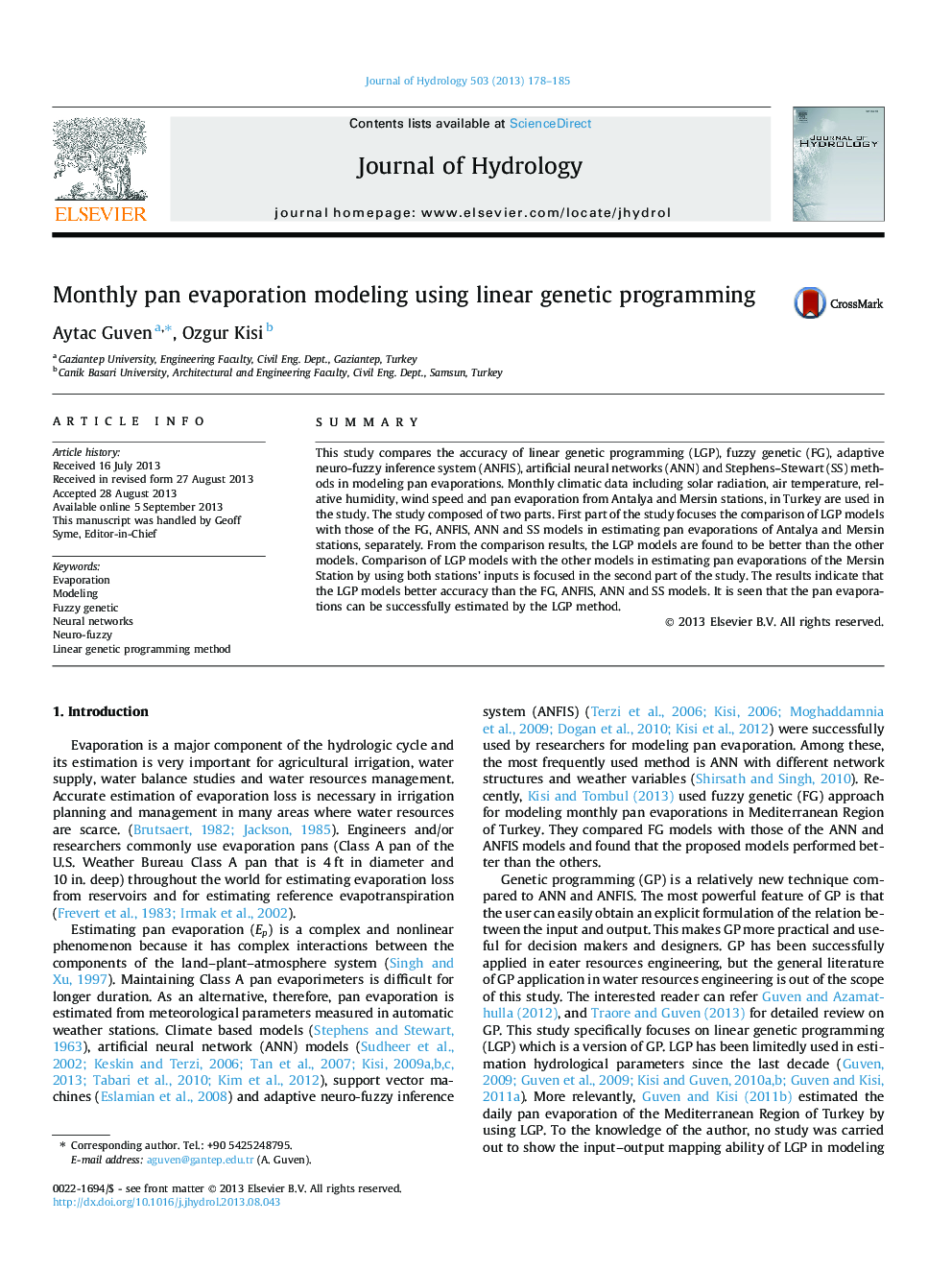| Article ID | Journal | Published Year | Pages | File Type |
|---|---|---|---|---|
| 4576195 | Journal of Hydrology | 2013 | 8 Pages |
•We develop monthly pan evaporation predictive models.•We utilize linear genetic programming, which has not been applied yet.•Our models perform better than blackbox models despite its simpler structure.•We propose small empirical formulae driven from the proposed LGP models.•This makes LGP models very practical in early design of hydraulic structures.
SummaryThis study compares the accuracy of linear genetic programming (LGP), fuzzy genetic (FG), adaptive neuro-fuzzy inference system (ANFIS), artificial neural networks (ANN) and Stephens–Stewart (SS) methods in modeling pan evaporations. Monthly climatic data including solar radiation, air temperature, relative humidity, wind speed and pan evaporation from Antalya and Mersin stations, in Turkey are used in the study. The study composed of two parts. First part of the study focuses the comparison of LGP models with those of the FG, ANFIS, ANN and SS models in estimating pan evaporations of Antalya and Mersin stations, separately. From the comparison results, the LGP models are found to be better than the other models. Comparison of LGP models with the other models in estimating pan evaporations of the Mersin Station by using both stations’ inputs is focused in the second part of the study. The results indicate that the LGP models better accuracy than the FG, ANFIS, ANN and SS models. It is seen that the pan evaporations can be successfully estimated by the LGP method.
